Mazda’s Takumi:
How they help us to feel the joy of driving with all our senses
Human-centric philosophy is at the heart of everything that goes into making a Mazda.
And in the craftsmanship development group, a unique department that was formed in 1999, the takumi – or craftsmen – have been focusing on a particular aspect of a pleasurable driving experience: the feel of the interior.
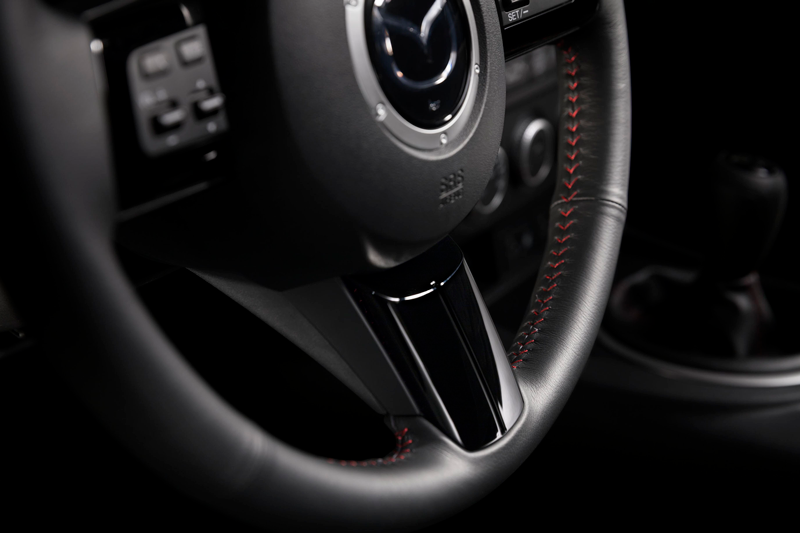
Nobuyuki Fukui, one of the group’s founding members and its current leader, explains why: ‘As our quality of life improved over the years, it was no longer enough that a car was merely good looking or had good performance. Also, until recently, we were behind European cars on feel and texture. That’s why Mazda decided to focus on craftsmanship.’
Mazda’s five senses
In their quest to deliver the ‘joy of driving’, Fukui’s team has built on their unique definition of the five human senses: sight, touch, hearing, smell and physical experience (how it feels when you handle the car). Even a slight sense of displeasure or oddness can spoil the car’s overall quality, so the team’s job is to eliminate that as much as possible.
For example, touch. The sense of touch is key to our happiness and sense of stability, as when a child is comforted by gentle strokes on their back or when we feel secure wrapped in a soft blanket. So in a car, everything that we touch from the steering wheel to the instrument panel and the seat covers plays a crucial part.
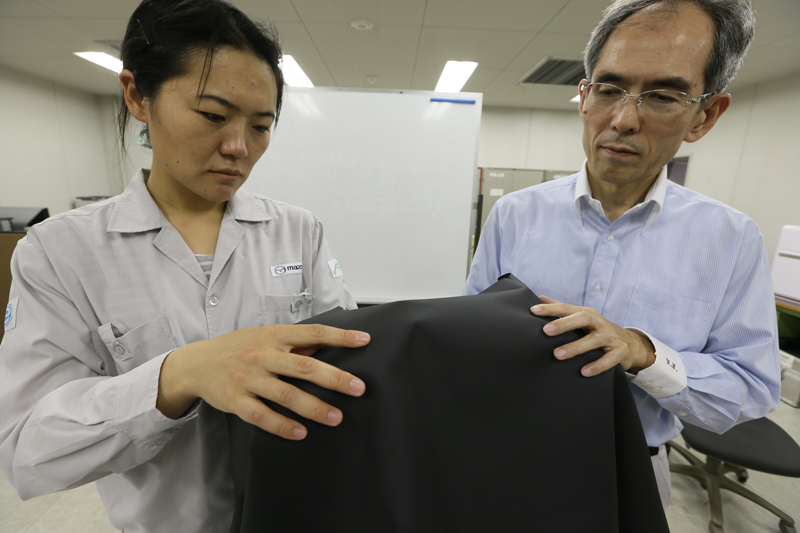
Asami Yonezawa, the engineer in charge of crafting the sensations of ‘touch’ within the group, explains the process: ‘In order to understand what constitutes a good sense of touch, we needed to collect data on how people react to actual materials. So we asked our panellers to touch different types of leather and recorded their reactions.’
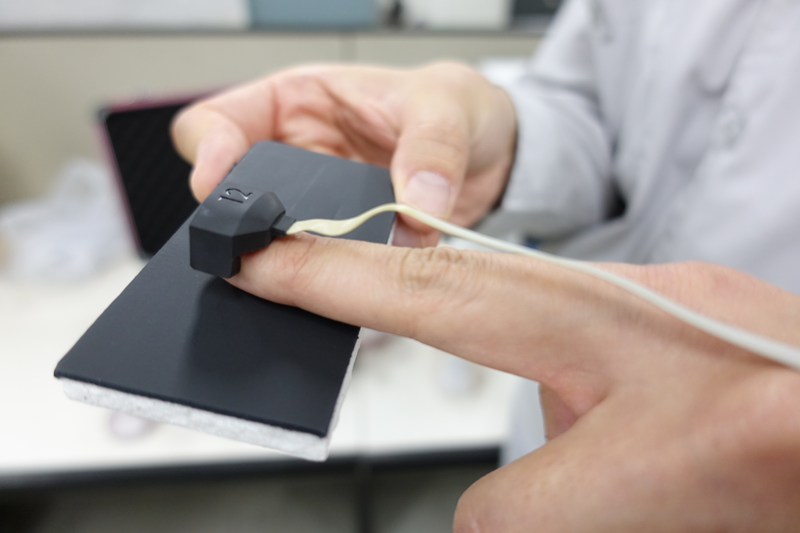
As a result of this experiment, Yonezawa discovered that the three sensations that people find to be pleasurable were ‘supple’, ‘smooth’ and ‘soft’.
‘It occurred to me when I was cuddling my child that their skin’s softness always amazes me. It is unlike anything else. I wanted to see if I could recreate that sensation in a car interior.’
Sensations by numbers
Next, the team had to quantify the three sensations. They experimented through touch – stroking, rubbing, applying pressing – on various parts of the car, consulting with suppliers and trying different measuring techniques, to understand how these parts would feel to drivers and their passengers.
‘We made a trial steering wheel, attached it to a car and everyone in the team drove it around the test course,’ recalls Yonezawa. ‘But the result was not what we hoped; we got disastrous feedback, including people saying the steering wheel was sticky. But thanks to this experiment, we were able to identify key variables such as how much our hands sweat, and how different leather can feel when it’s actually stretched into the shape of a wheel.’
A universally great car
So what makes a car feel great? What measuring techniques are necessary in quantifying those feelings and sensations, and channelling them into the manufacturing process? The members of Mazda’s craftsmanship development group, with the help of other departments, are contstantly grappling with these questions.

‘In recent research, we discovered that our sense of pleasure is affected by the discrepancy between how we might imagine something might feel and how it actually feels when we touch it,’ says Fukui. ‘The study of ‘touch’ is complex and still poses many unanswered questions, but because of that we can make a lot of new discoveries. We want to create a car that feels good to anyone, anywhere in the world; we’ve got a lot of work ahead of us.’
How a young female engineer revolutionised Mazda’s surface texturing
First, a quick quiz. Do you know what this is?

It’s a silicon model of a finger that measures how our fingertips register sensations. It’s the brainchild of Asami Yonezawa, a promising young engineer in Mazda’s craftsmanship development group that researches into pleasurable sensations.
‘I wanted to measure the weight and vibrations felt by our fingertips, but I couldn’t do that by putting my own finger in a sensor. So I came up with the idea of making a silicon model instead.’

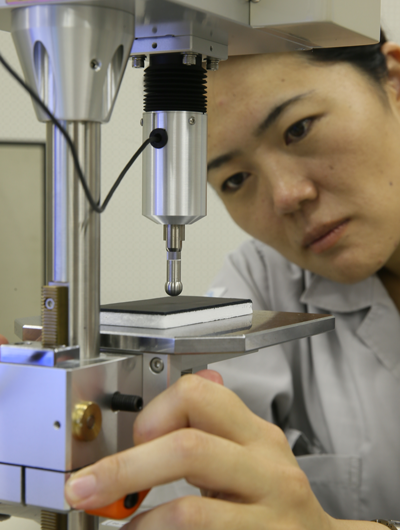
Sadly, soon after Yonezawa invented her silicon finger a more accurate measuring device was discovered and she didn’t have an opportunity to test it out. But her desire to take on challenges, as illustrated by this silicon finger project, would go on to revolutionise Mazda’s surface texturing techniques.
Surface texturing: the key to how we feel
So what is surface texturing? As soon as we get into a car, we touch various parts of the interior, but what if the wheel was sticky or the dashboard was hard like metal? Not only would it spoil the drive, but our frustrations could distract us and jeopardise our safety.
Yonezawa says this is where surface texturing comes in. ‘Tactile sensations are deeply linked to our sense of enjoyment as well as safety. So we use surface texturing in the final stages to create crimps or patterns in order to improve those sensations.’
Every part of every Mazda that we touch has undergone this surface texturing treatment. Even a slightly grainy surface can dramatically change how it feels when we touch or handle the car, as well as how it looks.
Appearance versus feel
However, it’s difficult to make a surface both good to touch and good to look at. For example, the leather used on the steering wheel is coated with a varnish or sunscreen to protect it from deterioration, but this can feel unpleasant to touch. Also, Yonezawa and her team have to bear in mind that the five human senses are deeply linked: how something looks can affect how it feels.
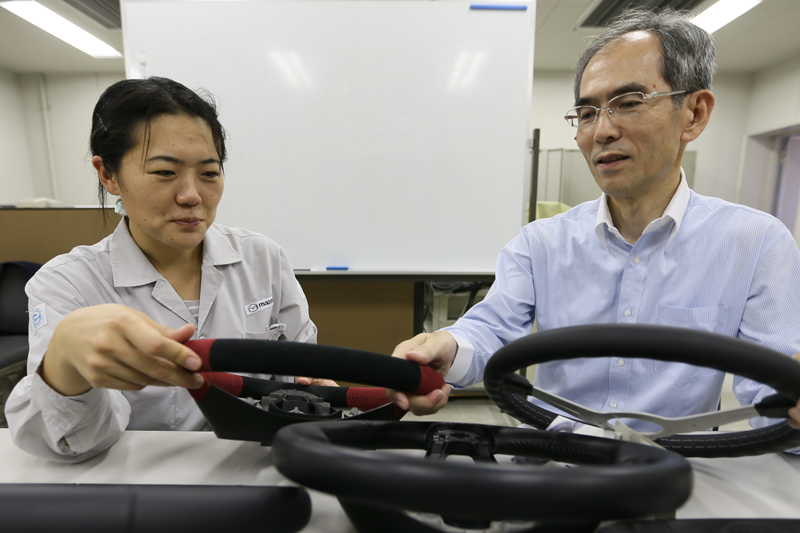
Nobuyuki Fukui, leader of the craftsmanship development group, adds: ‘On top of that, we want to refute the widely accepted view that if a car’s interior looks good its quality will deteriorate quickly and if it holds its quality well that means it’s not great to touch.’
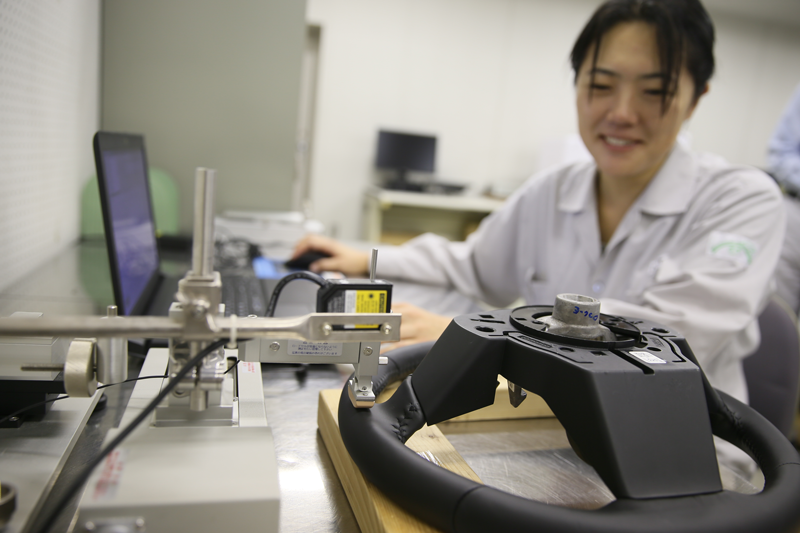
In their research, Fukui and Yonezawa measured how light hits a raised surface and what sort of friction or vibrations might be felt if a finger touches leather, and they looked into physical reactions such as heart rate, blood flow and perspiration levels.
They tested many samples, working with suppliers and material development teams as well as consulting their budget, and they finally succeeded in creating a steering wheel that not only looks and feels better but also holds its quality for longer. This new steering wheel has been installed in the all-new CX-8, the all-new Mazda3 and the CX-5.
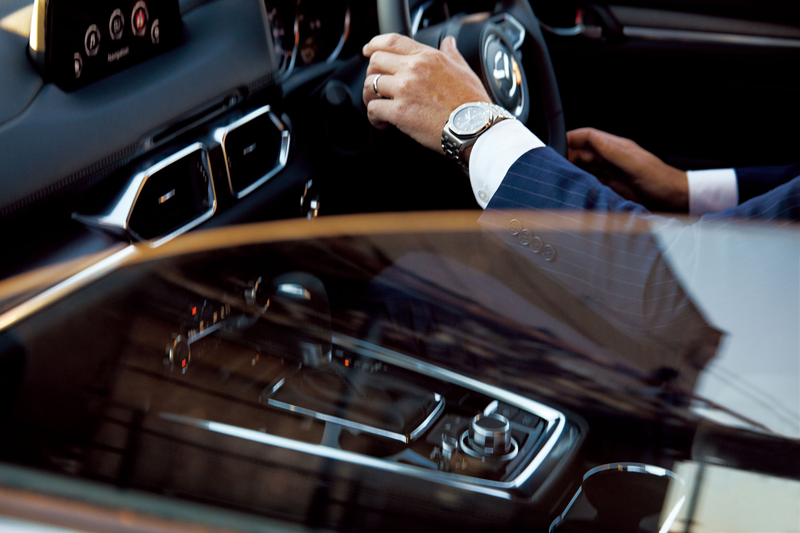
Cultivating young engineers
For the craftsmanship development group to make more breakthroughs in surface texturing, Mazda needs young engineers who can come up with an idea, execute it, understand the principles behind it and explain it – like Yonezawa with her silicon finger project.
‘Craftsmanship development requires an ability to improve all aspects of the car interior, as well as a deep understanding of human emotions and sensations,’ says Fukui. ‘We as takumi, or craftsmen, must work together to share a wide range of knowledge, experience and sensibilities. For young engineers to grow, we need them to not only gain inspiration from actually working on the factory floor and handling real material, but also develop the ability to understand the underlying principles and explain them.’
Mazda’s search for the next Yonezawa continues.
Other Stories

Driving stories on the great & challenging roads and journeys
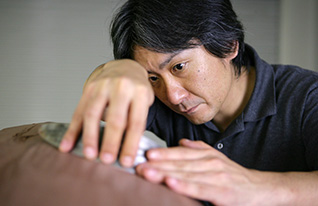
Stories about the craftsmanship and design evolution of Mazda
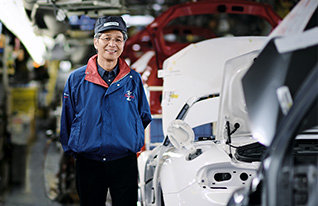
Visions and philosophies of Mazda engineers
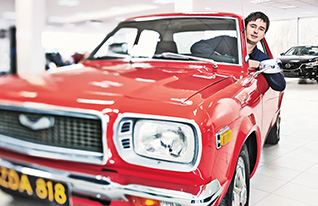
The spirit of Mazda owners, collectors, clubs and aficionados around the world

Mazda brand heritage and history

